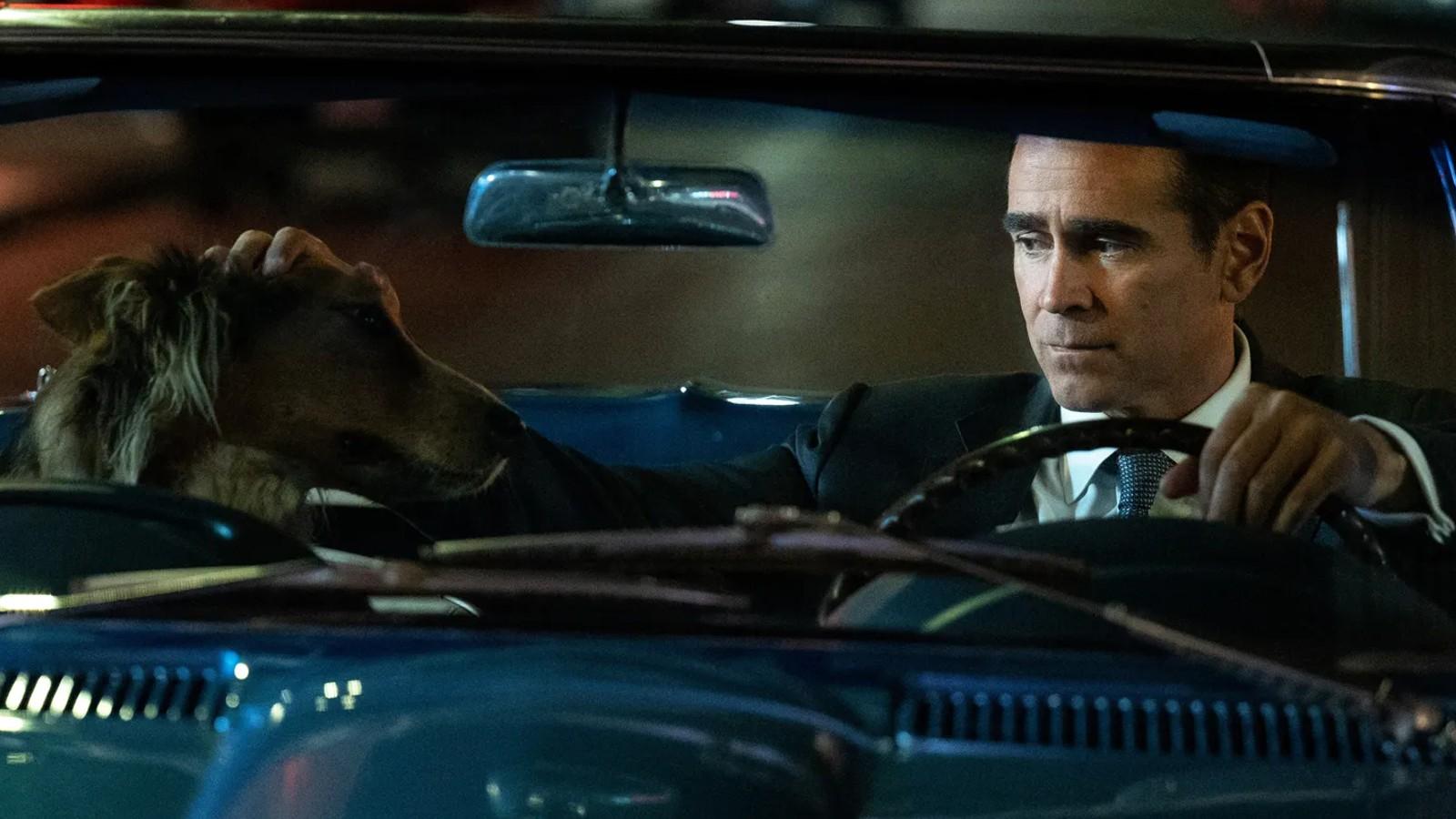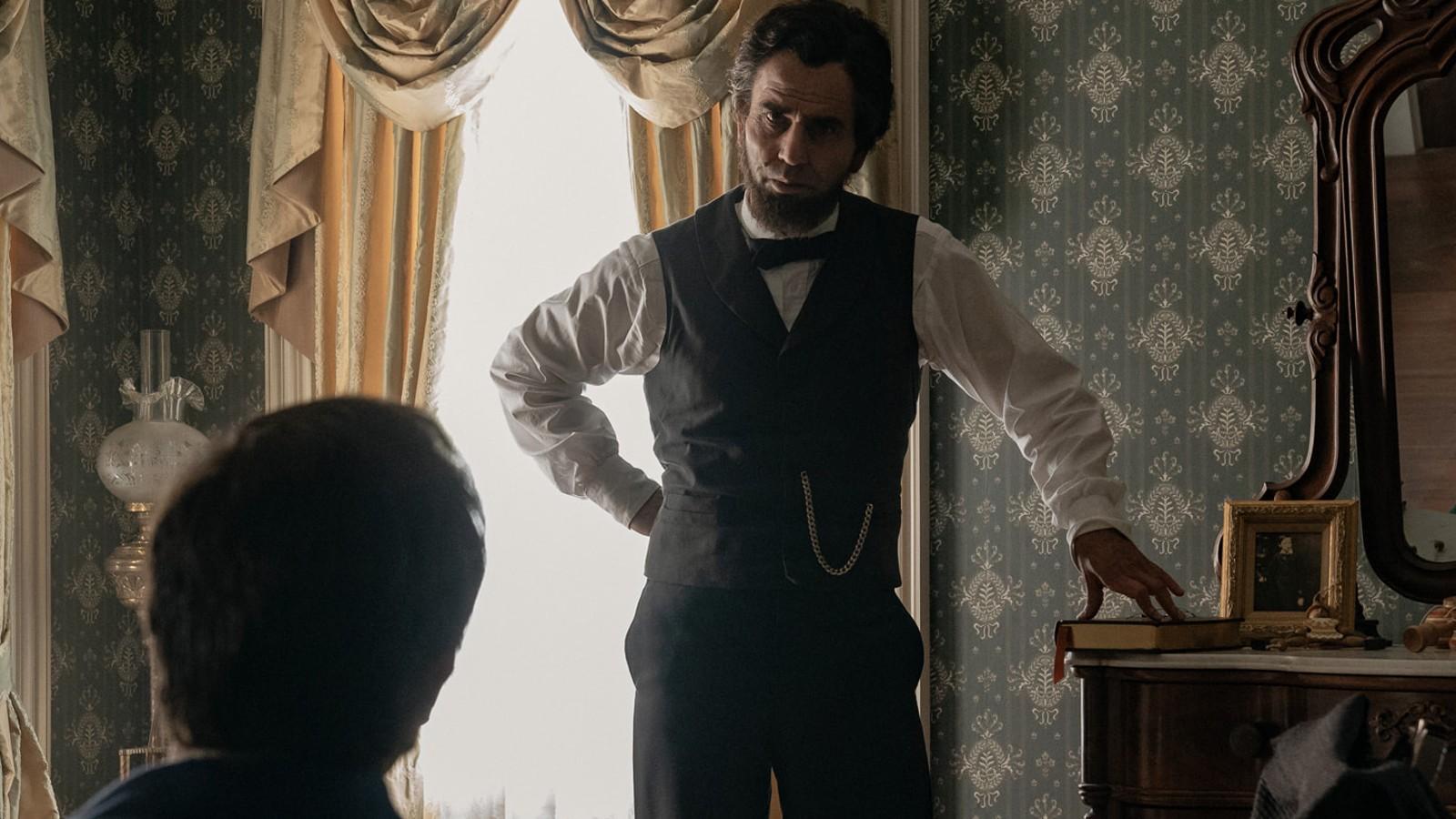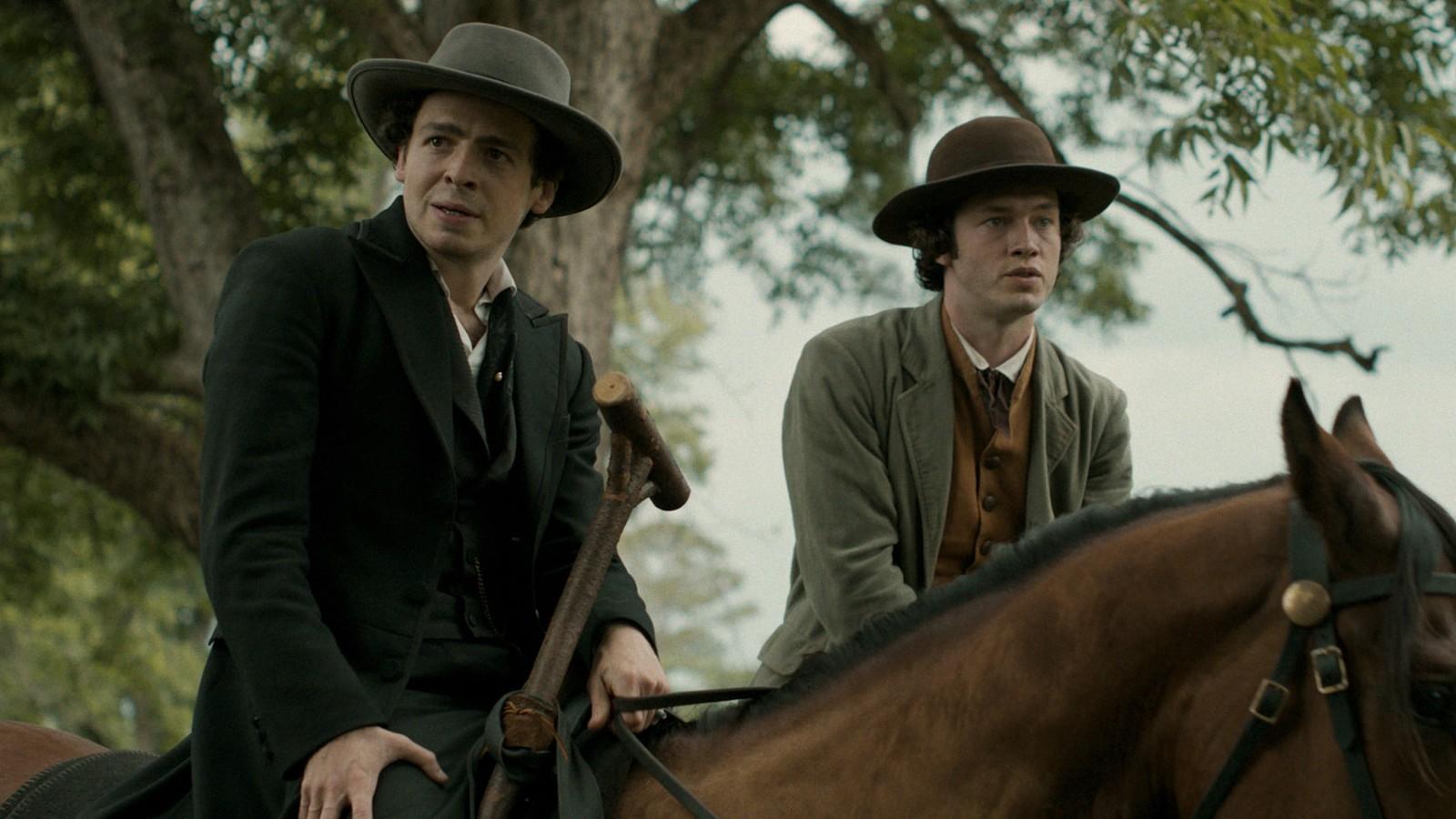How accurate is Masters of the Air? True story explained
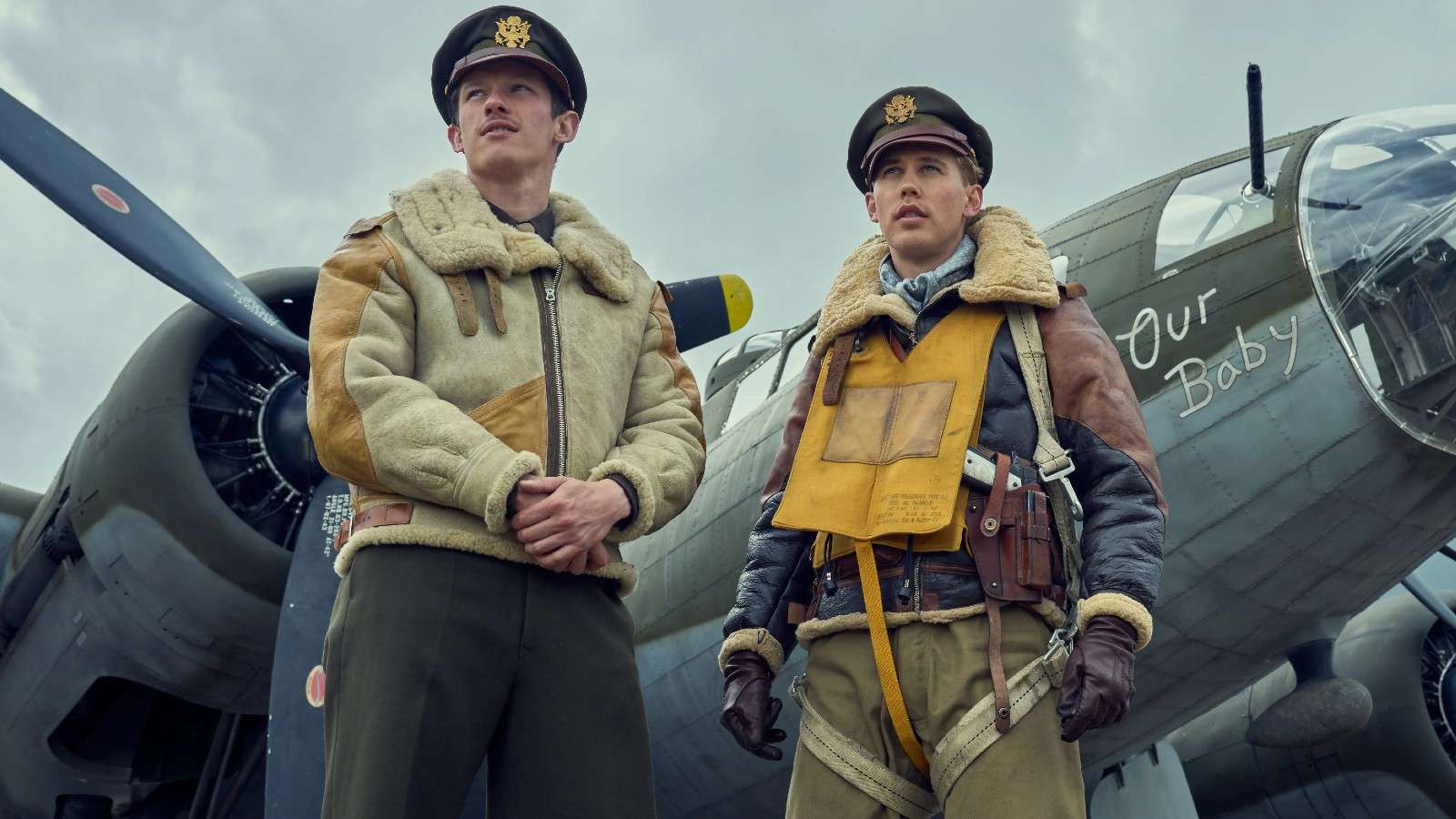 Apple TV+
Apple TV+As Masters of the Air has now finished its run on Apple TV+, here’s a breakdown of what’s accurate, and what isn’t, in this remarkable true story.
Band of Brothers remains one of the most significant TV shows of the post-millennium slate. Following The Sopranos, it showed what television could be capable of: telling extraordinary, resonant stories with heavyweight talent like Tom Hanks and Steven Spielberg, and spending money where it mattered.
Its glimmering success paved the way for The Pacific, switching the wartime POV to Marines in the wake of Pearl Harbor. It was similarly praised, with critics and historians highlighting its unforgiving, brutal authenticity in recounting the experiences of men in the Pacific theater.
While the new series – which is streaming on Apple TV+ – tells the tale of a specific group of airmen. You can read our review of Masters of the Air here. While to find out just how accurate the true story is, scroll down…
Is Masters of the Air based on a true story?
Yes, Masters of the Air is based on the true story of the 8th Air Force’s 100th Bomb Group, nicknamed the “Bloody Hundredth” on account of their immense losses.
In more exact figures, the 100th flew 8,630 missions over 22 months between June 25, 1943, and April 10, 1945. In that time, 757 men were either killed or went missing in action, with more than 900 men becoming prisoners of war and the group losing 177 aircraft.
The series is adapted from Donald L. Miller’s book of the same name, as well as A Wing and a Prayer, the memoir written by Harry Crosby (played by Anthony Boyle, also the series’ narrator).
“By the end of the war, the Eighth Air Force would have more fatal casualties – 26,000 – than the entire US Marine Corps. 77% percent of the Americans who flew against the Reich before D-Day would wind up as casualties,” Miller wrote.
How accurate is Masters of the Air?
The simple answer: very. While some have criticised Masters of the Air for its contrasting of American and British “philosophies”, each episode is thoroughly considered and researched – and it’s been praised by the Donald L. Miller, who also served as a historical adviser.
“[Tom] Hanks’s mantra to us was don’t make up anything. No bullsh*t. Tell the f**king story. Just as it happened. There’s enough real stuff that you don’t have to exaggerate. We were interested in the psychological and emotional price paid by these young guys, most of them under the age of 24. That’s what drew us into this thing. How the hell did some of them get through it.
“We wanted to catch the mood of Das Boot. Not over the top Hollywood stuff, but war just as it is. Hanks kept making the point: I want a movie where men are just doing their jobs.”
Miller also told USA Today: “The big difference between making this and The Pacific is that back then, a lot of those vets were still alive and the actors could call them, or we’d have them on set, and they’d tell us what really happened. With this, I was practically the only one who had known or interviewed many of these real vets. So the actors would come to me, and I’d help best I could.”
Below, we’ve highlighted some specific moments (and accusations of inauthenticity) from the show…
Buck and Bucky’s names
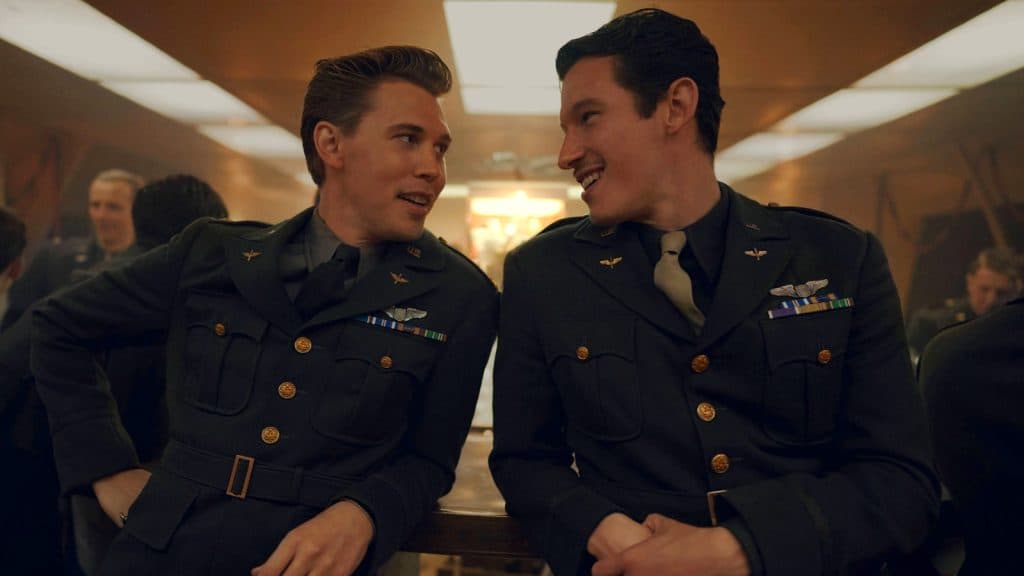 Apple TV+
Apple TV+The story of how Gale Cleven (Austin Butler) and John Egan (Callum Turner) met and became known as Buck and Bucky is completely accurate.
As per the 100th Bomb Group Foundation, both men met at flying school. “Egan gave Cleven his nickname ‘Buck’… seems that Major Egan had a friend in Wisconsin that was named Buck who looked exactly like him,” the veteran’s page reads.
“Every time Egan introduced Cleven to people, he said, ‘Here is my friend Buck Cleven.’ Cleven said that even though he did not like it, the nickname stuck and from that point on, he was Buck.”
The 100th’s first mission
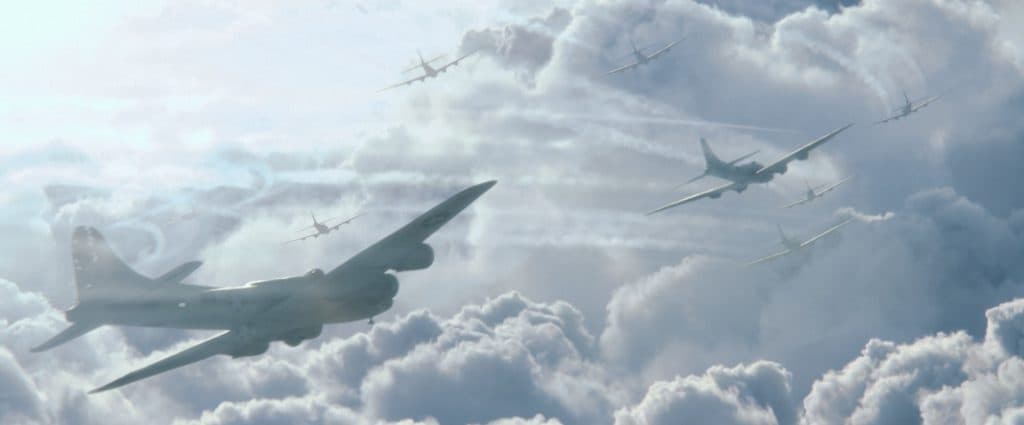 Apple TV+
Apple TV+Just like in Episode 1, the 100th kicked off its WW2 campaign with a mission to Bremen on June 25, 1943, with 17 B-17s leaving Thorpe Abbotts in the UK. Each was crewed by two pilots, a bombardier, navigator, radio operator, and five gunners. The aim was to bomb Bremen’s U-boat pens.
Buck Cleven flew one of those B-17s and managed to make it home – but three aircraft were downed in the mission, killing 30 men. These would be the first of hundreds of deaths among the group.
Americans vs the British
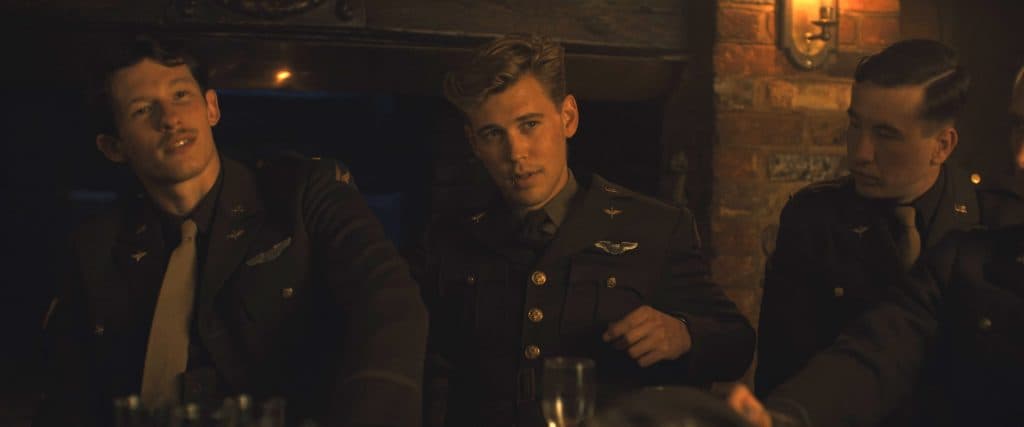 Apple TV+
Apple TV+In Episode 2, Buck, Bucky, and co. seem to rub members of the British RAF the wrong way when they’re in the pub, particularly when it comes to daytime bombing vs nighttime operations. While Miller has said there were “great relationships” between the two sides’ forces, antagonism occasionally reared its head.
“It was mostly over the fact that the Brits thought American flyboys were pampered. The Americans were much better paid, they wore snappy uniforms, seemed a little more dashing and in the competition for women they seemed to have the advantage. Money in the pockets, Sinatra records, the latest popular culture, foreign accents, these dashing Americans, the exoticism of it,” Miller told USA Today.
The Telegraph took a more negative view of its portrayal of the British, believing the series to minimize the UK’s role before the US touched down. In 1943, “the RAF dropped 157,457 tons of bombs on the enemy. The ‘Mighty Eighth’ only managed less than one 15th of that total – 10,655 tons,” the outlet wrote.
“The implication was that their methods were cleaner – both militarily and morally – than the nocturnal blunderings of the RAF. As it turned out the Bomber Command types in the pub were right and the Americans were wrong. Their losses in the late summer of 1943 forced a rethink and for a while they considered switching to night bombing themselves. In the end the situation was saved by the arrival of long range Mustang fighters which could escort bomber fleets to the target in daylight.”
The 100th’s injuries in the air
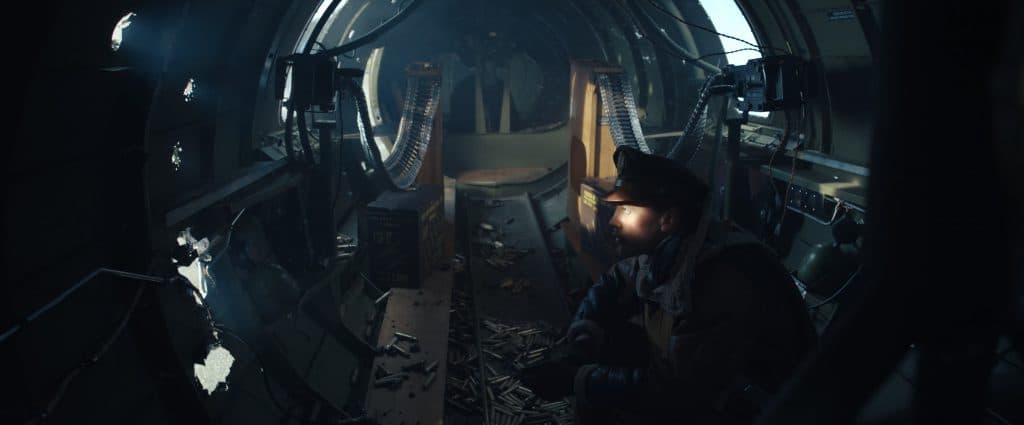 Apple TV+
Apple TV+While Masters of the Air is often graphic in its portrayal of war wounds and other injuries, these scenes are not gratuitous – they are incredibly realistic.
For example, one man removes his gloves to unjam a gun, only to de-palm his hand. Bear in mind they’re flying in sub-zero temperatures at 25,000ft – the metal would be cold, to say the least. As well as the likelihood of bullets tearing men to pieces, there was also the threat of oxygen loss and being hit by debris in the event they were forced to bail.
“Every position in the plane was vulnerable; there were no foxholes in the sky,” Miller wrote in his book, also explaining in an interview: “I don’t think you’ll find combat anywhere in history as intense as these air fights. You’re in an aluminum tube so thin a guy with a screwdriver could punch a hole in it. German (fighter pilots) would aim for the pilot and co-pilot, and a lot of pilots were beheaded by gunfire.”
“The noise is horrific, there are no seats, there are things flying all over the place. And it stunk already of cigarette smoke and cordite and the smell of human blood,” he added.
Curtis Biddick’s death
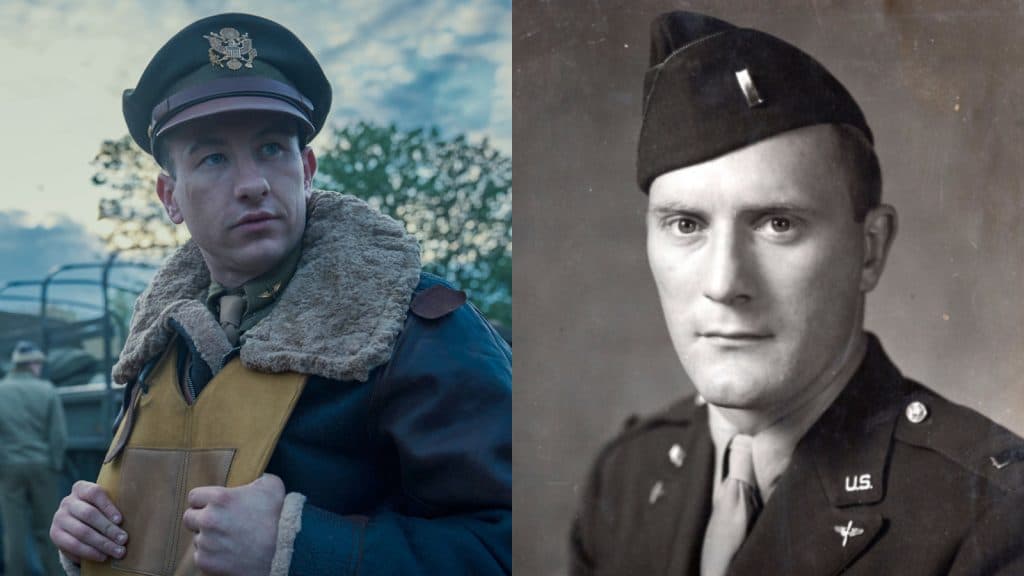 Apple TV+/James Potts
Apple TV+/James PottsCurtis Biddick (Barry Keoghan) dies in Episode 3 – but the real story is a bit different.
In the series, he orders his men to bail after his plane is battered by enemy gunfire. His co-pilot Dickie is on the brink of death, so instead of making him jump, he tries to land the plane. Sadly, he crashes into some trees around a field, before stalling and nosediving into the ground.
This isn’t hugely dissimilar to the account of the mission on Biddick’s page on the 100th Bomb Group Foundation’s website, although the show made some notable changes. “Over the target, the aircraft was attacked by a large number of enemy fighters. Cannon shells and machine gun fire tore through the ship, killing some crew and leaving large holes in the nose and fuselage, and starting a large fire in the oxygen storage compartment,” it recounts.
“Lt. Snyder exited the burning plane through one of these holes, reached back and retrieved his parachute, and put it on while standing on the wing. When he jumped, he hit the stabilizer which killed him.
“The aircraft crashed after Lt Biddick made an effort to miss a small village directly in the impact area. Several of the crew were injured, and were treated medically before being turned over to Nazi authorities. There were four dead, which were recovered and buried in the cemetery at Pulfringen. These were moved after the war, all to the US. Lt Biddick is buried in a group burial with two other airmen at the Jefferson Barracks National Cemetery in Missouri.”
Babyface and his death
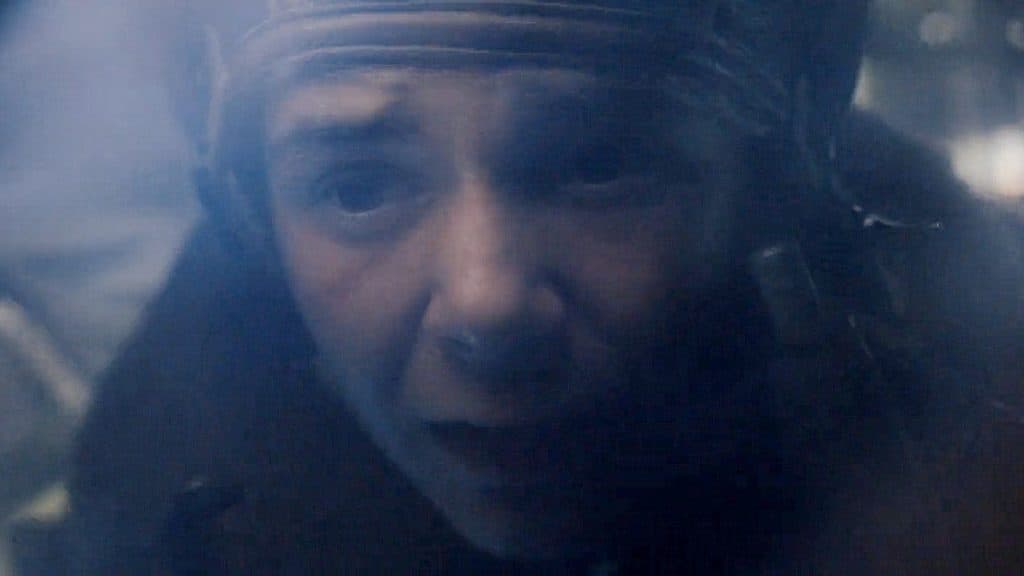 Apple TV+
Apple TV+Sgt. William Hinton, aka “Babyface”, is killed in Episode 3 after he’s trapped inside a ball turret. William Quinn can’t get him out, so he’s forced to abandon him and bail as the plane explodes. While the real-life Hinton died in action, this sequence isn’t accurate.
“This event is fictional,” the American Air Museum writes. “The individual casualty questionnaires completed by the rest of the crew in the missing air crew report report that Hinton was out of the ball turret before they bailed out, and they suspected he may have stayed too long in the aircraft assisting Musante.
“Hinton is also referred to by the nickname ‘Babyface’, another fictional detail unsupported by historical sources.”
The Munster mission
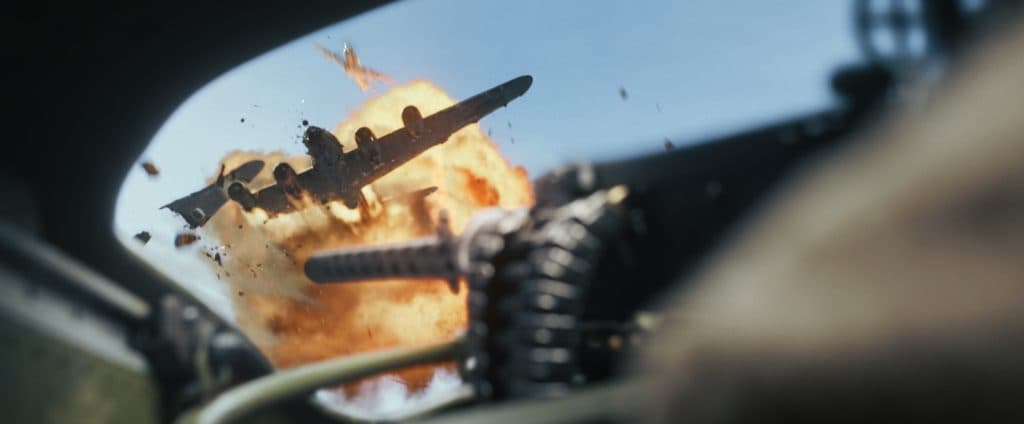 Apple TV+
Apple TV+In Episode 5, 17 bombers are sent to Munsters. Only 13 make it there, and just one crew survives – this is mostly true.
According to the 100th Bomb Group Foundation, “the group put up 18 aircraft along with two from the 390th BG to make it an even 20. Six aircraft aborted over the sea, one of which being a 390th a/c. That left 13 100th Bomb Group aircraft to carry on towards Munster.”
Twelve bombers went down during the raid, with Egan and his men forced to bail after their plane took critical damage (we won’t spoil what happens next, don’t worry).
“On the 10th of October, 1943, ‘Rosie’ and the 100th went to Munster. Only the B-17 Royal Flush with Rosenthal and his crew returned to Thorpe Abbotts. This mission as much as any other established the character of the 100th. There is a charismatic quality, earned many times over, about the 100th. No other Group is remembered with the reverence commonly accorded them. Robert Rosenthal, the 100th’s beloved Rosie, earned a large part of this reverence. A painting of the Royal Flush coming home is displayed at the American Military Cemetery, Cambridge, England,” the 100th’s website adds.
Buck and Bucky at Stalag Luft III
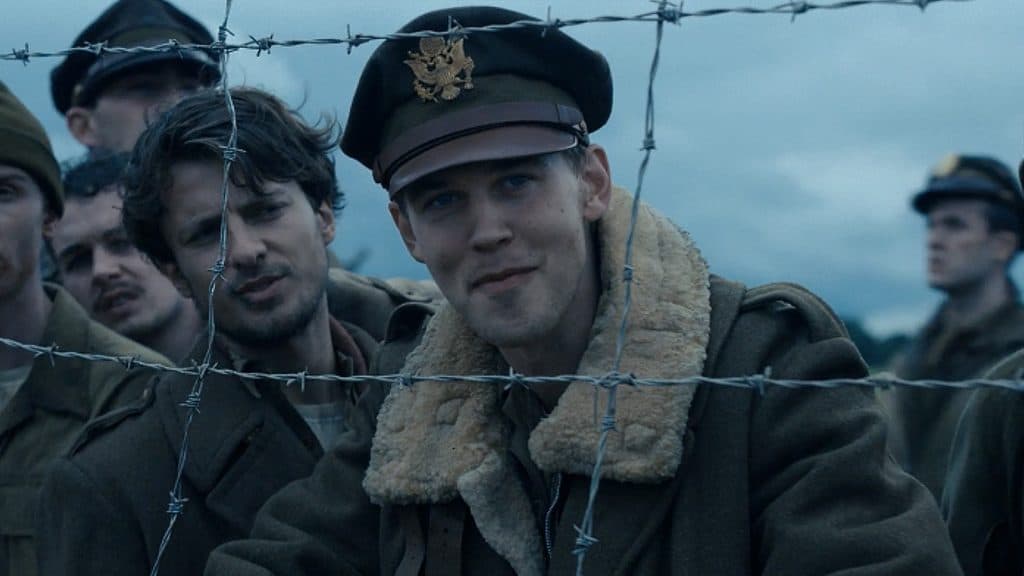 Apple TV+
Apple TV+Buck and Bucky did reunite at Stalag Luft III, a Nazi POW camp in Poland – and it was portrayed almost exactly as it happened in real life.
Buck was downed during the Bremen mission, while Bucky swiftly ended up stranded in enemy territory after his vengeful Munster mission went haywire. In real life, Buck arrived at the camp on October 23, 1943, as per his 100th Bomb Group profile, and Bucky made it there two days later.
Cleven’s page reads: “Upon John’s shoot down over Munster (led the mission to avenge his friend Gale Cleven being shot down two days earlier) and arrival at Stalag Luft III, the first thing Cleven said to Egan was, ‘What the hell took you so long?’ and he replied, ‘That’s what I get for being sentimental!’”
Who is Sandra Wesgate?
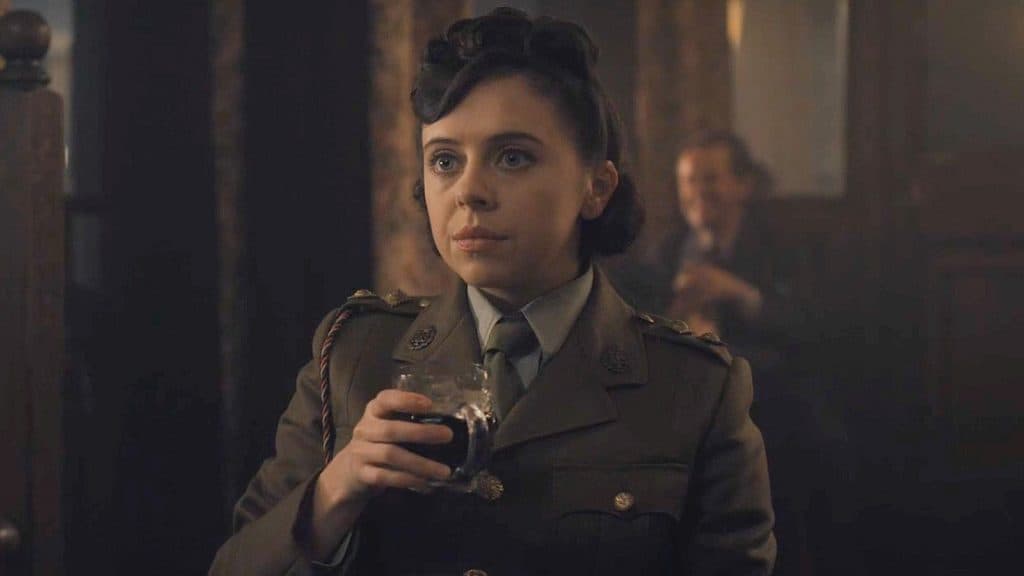 Apple TV+
Apple TV+Sandra Wesgate wasn’t a real person – but she is inspired by Landra Wingate, a woman Crosby met in real life and wrote about in his memoir.
It’s unclear why her name has been changed; on the show’s official podcast, Episode 6 directors Anna Boden and Ryan Fleck said they “had to change her name for various reasons.” Some have suspected that Wingate’s family may have objected to her inclusion, or perhaps they weren’t able to get permission – on account of the fact Crosby barely knew who she was in real life. You can read more here.
Where can you watch the true story?
A documentary that tells the true Masters of the Air story dropped on Apple TV+ at the same time the series concluded. The 62-minute film is called ‘The Bloody Hundredth.’
Narrated by Tom Hanks, the doc features photographs, newsreel footage, interviews with many of the men featured in the series, and even a cameo from Steven Spielberg as a talking head.
Apple describes the show as follows: “Meet the real-life airman who inspired Masters of the Air as they share the harrowing and transformative events of the 100th Bomb Group.”
Masters of the Air is now available in its entirety on Apple TV+, which you can sign up for here. While for more shows new to streaming head here.
Please note that if you click on a product link on this page we may earn a small affiliate commission.
